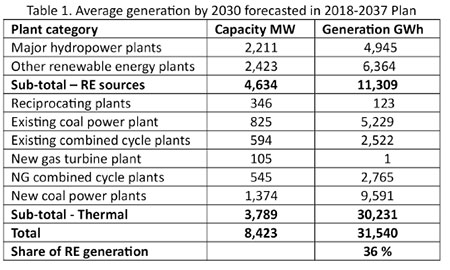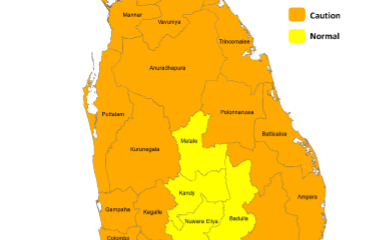Features
Power Blackout Committee Report:Recommendations run counter to President’s policy

By Dr. Janaka Ratnasiri
The Minister of Power, four days after assuming duties, had to face an island-wide power blackout which commenced around 12.30 pm on the 17th August and lasted up to 7-8 hours. The following day, he appointed a committee, comprising Ministry officials and power experts, to investigate the matter and submit a report within a week.
COMMITTEE APPOINTED
BY THE MINISTER
The Committee comprised two administrative officers, including an Additional Secretary to the Ministry of Power, serving as the Chairman, a Retired Professor of Mechanical Engineering, an Engineer who is a Chairman of a Corporation, two Senior Lecturers in Electrical Engineering, one senior official from the Ceylon Electricity Board (CEB) and one senior official from the Ministry of Power responsible for Renewable Energy Development. The Director General of the Public Utilities Commission of Sri Lanka (PUCSL) was also nominated but did not serve as there was a separate investigation being undertaken by the PUCSL. With two members from the Ministry, including one in the Chair, and another from CEB, the Committee cannot be considered as independent.
The Committee had met on the 18th and submitted an interim Report, to the Minister, on the 24th, which was also tabled at the Cabinet meeting held on the 26th. The Report was also made available at a press briefing held by the Ministry and the contents herein are taken from this Report. According to the Report, the Committee had visited the Kerawalapitiya Grid Substation (GSS) where the initial fault occurred claimed to be due to a human error, Lakvijaya Power Station (LVPS) at Norochcholai, Protection Branch of the CEB and the System Control Center of the CEB at Pelawatta, and had interviewed the staff on duty at these stations with a view to elicit information on the following.
The key reasons for the nationwide power interruption on the 17th August 2020 at 12:30 pm onwards.
Whether the CEB has taken precautionary actions and measures to prevent recurrence of interruptions that had been encountered in the recent past for which recommendations have been extended by similar committees that could have influenced the present incident.
Recommendations for remedial measures that need to be taken by the CEB to prevent recurrence of the same and similar incident.
Whether the CEB has taken the best professional practicing measures in handling the incident and the conditions that led to it employing proper planning, operational and administrative elements and had any constraint encountered CEB’s intended professional actions.
Whether the CEB had encountered similar incidents in the past and how the situation had been then handled.
Whether the CEB could have handled the situation judiciously to minimize the implication and how this could be avoided in the future.
PRELIMINARY FINDINGS OF THE
REPORT
The Committee, in its Interim Report ,has given a set of preliminary findings, among which are the following:
Routine maintenance work on the 220 kV isolators of the Bus Coupler Bay had been carried out on the day of the incident by the Electrical Superintendent-In-Charge at Kerawalapitiya GSS, who apparently has been attending routine maintenance work at the Kerawalapitiya GSS for the past five years. The power in the Bus Bar 01 had been turned OFF for the maintenance, while the power of the Bus Bar 02 was ON. The Earth Switch 01 at Bus Bar 01 side had been OFF while the Earth Switch 02 at Bus Bar 02 side had been ON as shown in Fig. 1.2(a) at the time of incident.
Under normal operations the Earth Switch and the relevant isolator are interlocked, so that the isolator cannot be turned ON while the Earth Switch is turned ON. However, during maintenance, this interlock had been bypassed, so that isolator can be turned ON even with the Earth Switch is turned ON. At the end of the maintenance work of the 220 kV Bus Coupler Bay, while the interlock is bypassed, the Isolator on the Bus Bar 02 side had been turned ON as shown in Fig. 1.2(b), creating a 3 Phase to Ground fault.
The key reason for the nationwide power interruption on the 17th August 2020 is due to the 3 Phase to Ground busbar fault due to incorrect operation of the Bus Bar 2 Isolator of the Bus Coupler Bay by the Electrical Superintendent -in-Charge at the Kerawalapitiya Grid Substation busbar at 12:30 Hrs.
Kerawalapitiya Grid substation tripping was due to not following the correct maintenance procedure by the relevant officials including the Electrical Superintendent. The Committee also observed that there was no written maintenance protocol for this maintenance job in-line with the current best practiced maintenance protocols.
The Committee is of the view that due to the Kerawalapitiya Grid substation tripping, the system frequency has increased beyond the current setting of the rate of frequency tripping relay of the Lak Vijaya Power Station (LVPS). As a result, the generator-transformer circuits breakers of all three units of the LVPS which made LVPS unavailable to the grid, subsequently the system failed in cascade.
CEB’s recent failure to avoid a country-wide blackout and the longer duration taken to restore power to Colombo City in particular, indicates significant lapses in implementation of critical measures outlined in the previous Expert Committee Reports.
AUTHOR’S COMMENTS ON THIS
PROCEDURE
The cardinal mistake done by the Electrical Superintendent (ES) during the maintenance work was that he had disabled the interlocking system which prevents switching on the 220 kV line to the GSS while it is earthed, which is a protective mechanism incorporated into the system to prevent blunders by maintenance staff as happened. It is certainly not an “Ath Wereddak” as claimed by a senior official of the CEB. As a result, the ES was able to connect the high voltage line to the substation already earthed which created the havoc.
The question which arises is what was the necessity to disable the interlocking system to carry out the routine maintenance? The Report does not seem to have queried the ES on this. If the ES has done such an irresponsible act, deliberately, in any other organization, he would have been interdicted forthwith or at least sent on compulsory leave. But, the CEB Management thought otherwise, possibly for fear of trade union reaction.
The tripping of the 220 kV line at Kerawalapitiya apparently has caused a sudden increase in the system frequency at LVPS, resulting in the three generating units there to trip. A sudden increase in the frequency means that the speed of the generator rotors has increased suddenly. Isn’t there a mechanical device called a governor in the generator which helps in maintaining the rotor speed at a constant value? Is it a characteristic of a coal power plant to allow its rotor speed to vary suddenly in response to a disruption in the line? Was it that this governor did not function properly when this incident took place?
The CEB management should be faulted for not making available to the maintenance personnel proper maintenance manuals. It was alleged that even for the Norochcholai coal plant, the manufacturer never made available to CEB the operation manuals in English. That may be the reason for having Chinese technicians to attend to O&M functions even today. It seems that during the last 6-7 years since commissioning the plant, CEB personnel have not been able to learn the O&M functions from the
Chinese technicians. Though, the CEB staff at Norochcholai are unable to handle the O&M functions of the coal power plant by themselves, Sri Lankan personnel are managing three combined cycle power plants, two at Kelanitissa and one at Kerawalapitiya. This is one more reason why Sri Lanka should not build any more coal power plants.
RECOMMENDATIONS OF
THE REPORT
Among the recommendations made by the Committee are the following among others:
The committee strongly recommends a standard compliant, systematic, foolproof, safe procedures and maintenance protocols to be instated in the CEB during operation and maintenance (O&M). The implementation of these procedures will have to be continuously monitored and supervised by adequately qualified, professionally trained, knowledgeable, experienced and skilled personnel. The committee would like to propose a performance evaluating annual appraisal system which will help to improve the above attributes of the CEB staff.
The committee understands that there is no Operations & Maintenance related risk management mechanism in place. Therefore, it is recommended to establish a risk management mechanism in order to determine the proper mix of preventive measures, mitigation levels, shift or retention of risks and consequent level of robustness of Operations & Maintenance protocols that would indicate the positive impact on the overall system
The committee strongly recommends to implement the 2018-2037 CEB Long Term Generation Expansion Plan, as given in the plan, which clearly specifies the correct blend of technologies for the future requirements of the Sri Lankan power system to improve the system stability and reliability.
The committee recommends to review the existing protection strategy for frequency instability.
2018-2037 LONG-TERM GENERATION
EXPANSION PLAN
The first two recommendations are in order. One would expect that an organization like the CEB has already following proper standard procedures for O&M. But if they are lacking, priority needs to be given for the training of staff adequately. It has been alleged in the media that all foreign training programmes are given to engineering staff while the middle level technical staff who actually carry out the O&M work are given only local training. Perhaps, there is a case here and if it is true, it should be rectified.
Since the Committee has made a strong recommendation that the CEB’s 2018-2037 Long-Term Generation Plan be implemented, it is necessary to examine what this plan is. The CEB prepares biennially a long-term generation expansion (LTGE) plan outlining the least cost options of generation plants that need to be added to the system annually for the next 20 years to meet the forecasted demand. The latest plan is in respect of the period 2020 – 2039 but it is still in the draft form yet to be approved by the PUCSL as required by Sri Lanka Electricity Act No. 31 of 2013.
The CEB 2018-2037 LTGE Plan released in June 2018 provided for adding 2,700 MW of coal power capacity between 2023 and 2035 and 1,500 MW of natural gas capacity between 2019 and 2036, along with several gas turbines and diesel power plants as well as a large number of small renewable energy plants comprising mini-hydro, solar, wind and biomass systems, under Base Case scenario. However, the PUCSL did not approve this plan but recommended an alternative plan incorporating natural gas power plants in place of coal power plants included in the CEB Plan.
The CEB refused to accept this recommendation, particularly with objections raised by its Engineers’ Union (EU), and the dispute between the PUCSL and the CEB kept dragging for over a year, and the matter was finally referred to the President who gave a directive to the PUCSL to approve the CEB Plan, fearing disruption to the power supply in the country after the CEB EU threatened to resort to industrial action if their demand for coal power plants is not acceded to. This is something not expected from a body of professionals and unheard in other countries.
Also, the LTGE Plan is highly flawed. It is supposed to determine which power technology will be the cheapest in 20 years hence based on current prices. With the cost of generation depending on plant capital cost and fuel prices both of which could vary widely within a span of 20 years, it is futile to make forecasts now as to which technology is the cheapest in 20 years hence and to adopt it. Although the CEB 2018-2037 Plan has recommended building 2,700 MW of coal power plants on grounds that coal power is the cheapest option, a report by World Bank Group study on Sri Lanka Energy Infrastructure Sector Assessment Programme (InfraSAP) released in February 2019, says in p. 18 that “coal ceases to be the least cost source of power generation, as cost of power from LNG and NCRE could potentially be lower than US cents 9 / kWh” which is the estimated coal power price.
It is therefore obvious that the 2018-2037 Plan is not a plan approved after considering engineering and economic aspects properly but approved on political grounds. Hence, the Committee’s strong recommendation to implement such a flawed plan is an attempt to take the power sector development in the country along a wrong path. It is not surprising that the Committee has made such a biased recommendation when two senior officials from the Ministry and one from the CEB are in the Committee. In any case, building more coal power plants is not a solution to a possible blackout in the future. This is the second attempt when the Ministry tried to get building of coal power plants inserted into a policy document on the sly. The first attempt was when the Cabinet took a decision on post-Covid activities to be undertaken urgently in view of the “emergency” situation in the country, building a 300 MW coal power plant at Norochcholai was inserted as one activity in the Cabinet decision.
It is also mentioned that the implementation of the CEB 2018-2037 Plan with more coal power plants is recommended to improve the system stability and reliability in the future. The Committee has not justified that the system stability and reliability would be better with coal power plants than with natural gas power plants for the Committee to make such a statement. However, it was shown in this instant that it was the instability of rotor speed of the coal power plants resulting in raising the frequency suddenly that caused the three coal power plants to trip. Hence having more coal power plants will not be of any help to maintain the stability of the system. On the contrary, it will make it worse.
Further, it is noted that with a coal power plant once shut down, it is necessary to wait several days until it cools down before it can be re-started. On the other hand, with a natural gas operated combined cycle power plant, there is no such delay and the plant can be energized within a few hours.
RECOMMENDATION VIOLATING THE
PRESIDENT’S POLICY
In the President’s policy document, “Vistas of prosperity and splendour”, he says “We also anticipate that hydro and renewable energy together would account for 80% of the overall energy mix by 2030”. The State Minister for Renewable Energy said during his assumption of duties that the Ministry’s target is to use renewable energy resources to generate at least 80% of the total generation of electricity by 2030. The Power Minister has also made a statement to that effect in the Parliament. However, it is not possible to achieve this target if the CEB 2028-2037 Plan is implemented.
The LTGE Plan has worked out the average generation from each plant type annually and the values obtained for 2030 are given in Table 1, extracted from the data given in Annexes 7.4 of 2018-2037 LTGE Plan. It is to be noted that it is not possible to forecast exact values for generation from each category in the future because it depends on many extraneous factors, such as rainfall, cloud cover, wind regime, fuel prices and demand which are not known accurately in advance. Annex 7.4 gives average values after considering several scenarios.
It is seen that according to the CEB’s LTGE Plan for 2018-37, generation from renewable sources could reach only 36% by 2030, which is far below the 80% target given in President’s VPS Policy Document, assuming what is intended by “total energy” appearing in this document is total electricity generation.
Therefore, the Committee’s strong recommendation that the CEB’s 2018-2037 Plan be implemented is a gross violation of the President’s Policy. It is surprising that a learned Committee including several officials in the Ministry, are not aware of the President’s policy. The Power Minster should call for explanations from the Committee Members why they overlooked the President’s Policy when they made their recommendation.
Features
Proxy wars make unsettling comeback

 It’s the day of the North-East proxy war all over again. Concrete proof that this is so comes in the form of the latest military aid package approved for Ukraine by the Biden administration running into $60 billion. So substantial is this injection of assistance that it has prompted Ukrainian President Volodymyr Zelenskyy to see it as pointing to a “chance of victory”.
It’s the day of the North-East proxy war all over again. Concrete proof that this is so comes in the form of the latest military aid package approved for Ukraine by the Biden administration running into $60 billion. So substantial is this injection of assistance that it has prompted Ukrainian President Volodymyr Zelenskyy to see it as pointing to a “chance of victory”.
To the extent to which the West sees some of its best interests, such as the right to self- determination, being eroded in the Ukraine, to the same degree could the latter’s efforts to protect its independence against the Russian invasion be seen as a proxy war where the West pits itself indirectly against the East, in the form of Russia.
Only time will tell whether Zelenskyy is right in seeing the emergence of a “chance of Victory”, now that the much hoped for aid has arrived from the West, but increasingly sizeable and sophisticated arms for Ukraine foreshadow a further prolongation of the wasting war in the Ukraine. While the Russian armed forces would need to brace for an escalating and more destructive confrontation in the Ukraine, the civilians on both sides of the divide should see themselves as being placed ‘on the firing line’ as never before. Overall, the human costs of war would prove staggering.
To make matters far worse for the Russian side, the UK government too has weighed in with an aid package for Ukraine to the tune of Sterling Pounds 500 million, making the prospect of bringing early relief to the relevant suffering publics by the international community a very distant one, since the war in the Ukraine would be stepped-up several fold as a result of the influx of more arms.
It would not be irrelevant, at this juncture, to take the minds of Russia’s rulers to their Cold War failure in Afghanistan. There was nothing to gain from the long-running Afghan quagmire for both sides to the conflict. The USSR’s failed military intervention left behind an Afghanistan which has wilted in the grip of big power rivalries over the decades.
However, Afghanistan was the last of a number of Cold War era proxy wars which rendered the world an increasingly dangerous place for the majority of its peoples. We are not seeing a Cold War type ideological confrontation in the Ukraine, but it is an open question whether the Russian people, for instance, are gaining anything substantial from the war right now.
The Ukraine situation, though, points to the primacy of sovereignty and issues flowing from it in these post-Cold War times. What Ukraine impresses on ambitious global powers is the impossibility of waging colonial era type military interventions in particularly the global South at present. Ukraine, under President Zalenskyy, has decided to fight back the Russian invasion tooth-and-nail and the likelihood is that there would be no clear winners from this war of attrition.
An independent country which is committed to protecting its sovereign rights has no choice but to fight back forces that are intent on destroying it and this is the task that Ukraine has set for itself right now.
On the other hand, the Russian political and military establishments are in an effort to revive the colonial project in Ukraine, which is a preposterous proposition in the present global political order which is gravitating towards political and economic liberalization. Given this backdrop it is small wonder that the West and its military arm, NATO, are firmly behind Ukraine.
Not surprisingly, the West is seeing in the Russian invasion of Ukraine a flagrant violation of all the political values that it claims to uphold and protect. There is no turning back on the moves towards political and economic liberalization that characterize the current neo-liberal age.
Moreover, by invading Ukraine it could be said that Russia is in an attempt to take the world back to some of the earliest stages in the development of modern day capitalism. Besides, if Russia’s reasons for invading Ukraine are to be accepted, any bullying big power could consider itself justified in invading its smaller neighbours, which it sees as coming under its suzerainty.
Accordingly, the world is in for a long-running East-West proxy war in the Ukraine. However, the world’s security worries would in no way end with the Ukraine because it also has other major concerns in the form of the Middle East blood-letting and the Taiwan Straits, in addition to those parts of Africa that are continuing to be weighed down by inter and intra-state turmoil.
In the Middle Eastern theatre and in the Taiwan Straits, intervention by the West is bound to continue and intensify because the latter sees some its crucial interests as being threatened in the relevant regions. Despite its keenness to extend humanitarian assistance to the war-affected populations in the Gaza, the US remains committed to protecting Israel’s best interests.
Such concern has heightened in the wake of the current hostilities between Iran and Israel. It would be in the US’ interests to keep Iran in check because the latter is a threat to Israel as well as to the West’s oil and energy supplies. Accordingly, the US would be going the extra mile to ensure Israel’s security while preventing Iran from being too great a military and political power in the Middle East.
The US could work towards the latter aims by constantly arming Israel and ensuring that the military balance in the region is constantly in favour of Israel rather than its foes’. Here too, then, is an ongoing proxy war between the West and the East; the latter taking the form of Iran which is backed by China and Russia.
Another potentially destructive proxy war between West and East is, meanwhile, working itself out in the Taiwan Straits. The US has over the years been seeing itself as a natural ally of Taiwan because the latter is a capitalist outpost in South East Asia as well as being viewed as an adversarial, break-way state by China. In its efforts to contain the power of China in Asia, the US has been seeing it to be in its interests to ensure the security of Taiwan as against China’s growing regional predominance. All this works out to more Western military aid to Taiwan, going forward.
Accordingly, proxy wars between West and East are once again surfacing unsettlingly in international politics. Military budgets of Western powers are set to grow at the expense of welfare budgets. Needless to say, the latter trend will eventually result in growing public unrest and anger towards governments.
Features
Artificial Intelligence: Are we getting into it with our eyes open? – Part II

by Prof. Janendra De Costa
Senior Professor and Chair of Crop Science, Faculty of Agriculture, University of Peradeniya
How prepared is Sri Lanka for AI?
With the initiative coming from the very top, it is likely that AI will come to the fore at least in the official documents on development strategy and policy in the near future. As promised by the Minister of Education, AI is likely to make its way in to school curricula as well. Being an election year, there is a good possibility that the manifestos of all mainstream political parties in Sri Lanka will carry statements about promoting AI. Therefore, it is pertinent to ask whether Sri Lanka has the pre-requisites for successful adoption of AI in its key sectors and whether AI can be included in the school curricula from next year onwards. While confessing to be a non-expert in AI, my view, as an educator, researcher and a practitioner of Science is that Sri Lanka needs a substantial effort to first build a foundation for successful adoption of AI.
First and foremost, Sri Lanka lacks the human capital, an adequate number of trained personnel and practitioners in AI. The considerable exodus of experts in computer science and related technologies since the 2022 economic collapse and its repercussions in the aftermath have left the country significantly impoverished in terms of expertise in almost all established disciplines. The scarcity of experts would be even more acute in new, emerging disciplines such as AI. When the President and the Minister of Education talks about including AI in the school curricula, it is doubtful whether they have considered the availability adequately trained teachers to teach AI in schools or whether there has been adequate preparation in terms of computer facilities, textbooks (printed or electronic) and other learning resources.
Secondly, the past record of adopting new, emerging technologies in Sri Lanka tells us that the tendency will, most probably, be to adopt AI tools developed elsewhere with algorithms trained on data collected elsewhere. Only a small minority of the Sri Lankan experts is likely to take the considerably more difficult pathway of developing our own AI tools and training them on data collected specifically in a Sri Lankan context. As mentioned earlier in this article, the big, comprehensive data sets on which to train AI algorithms do not exist at present in most of the key areas where AI could make a significant positive contribution to national development of Sri Lanka. With the present and past levels of government investment on R & D in S & T (Sri Lanka with only 0.1% of its GDP invested in Science and Technology ranks among the lowest in the world in this index), there is little hope that there will be adequate and sustained support to develop our own AI tools to tackle the specific development needs of higher priority to Sri Lanka. The argument that why spend so much to develop our own AI tools when those already developed elsewhere are available will readily come from the government officials, especially those in the treasury, who have little understanding of how advancements in S & T take place via R & D.
Sri Lanka’s previous experiences in adopting new, emerging technologies
While we are about to embark on a journey to integrate AI into our national agenda, it is worth noting how similar initiatives in the past to integrate new, emerging technologies have fared. In this regard, the story of nanotechnology is especially relevant and offers valuable lessons. Nanotechnology in Sri Lanka was first promoted around 2005 as a technology that carried enormous promise for Sri Lanka to propel itself to the next level economic development via production of globally competitive nanoproducts. The initiative was spearheaded by the newly appointed Minister of Science and Technology, who was himself a former scientist and a former director of a state-sector research institute. The argument at the time was that Sri Lanka should invest its limited financial, infrastructural and humany resources on R & D in a few high potential areas rather than spreading it across all disciplines. Nanotechnology and biotechnology were the high-potential areas that were identified. The Sri Lanka Institute of Nanotechnology (SLINTEC) was established with state-of-the-art facilities on par with those available in developed countries and a select group of scientists from Sri Lanka and a few expatriate Sri Lankan scientists were employed on remuneration packages which were far superior to that enjoyed by the scientists in state sector R & D institutions. The initial funding came from a public-private partnership between the government and a few private sector organizations. It is worth noting that to provide its share of the venture, the National Science Foundation, the premier government organization that was funding S & T research in Sri Lanka diverted all its allocation for research from the treasury to the SLINTEC, thereby depriving research funding to all other areas of Science and Technology for a few years. To cut a long story short, today, after nearly 20 years, the expected nanotechnology boom along with the globally-competitive nanoproducts and the projected increase in the national GDP have not materialized while the SLINTEC, with all its state-of-the-art facilities barely survives, struggling to sustain itself financially, with all its expatriate Sri Lankan scientists gone back to their adopted countries and almost all Sri Lankan scientists who were employed initially having left for universities, in Sri Lanka and abroad. The most notable achievement of SLINTEC during this period was the development of a urea-based nanofertiliser, which when applied to the soil had the capability to release nitrogen slowly, thus facilitating its uptake by plant roots with minimum losses due to leaching. However, the US patent of this product, which was developed with a significant contribution of public funds of the Sri Lankan government was sold to a foreign company in a transaction, the details, and conditions of which are still not transparent to the general public. Ironically, after having spent so much on developing a nanofertiliser of its own, Sri Lanka had to spend another huge sum of public money to purchase a liquid nanofertiliser during the ill-fated 100% organic agriculture drive. Like the 100% organic agriculture project, the imported liquid nanofertilizer turned out to be largely ineffective.
The lesson that can be learnt (for those who are willing to learn) from Sri Lanka’s experience to adopt and promote nanotechnology is that successful and widespread adoption of a new technology is not possible without first establishing a broad base of R & D expertise and infrastructure in an adequately wide range of disciplines and applications. Establishing a centralised institute, however well-equipped, will not be sustainable in the long run and will not make a significant impact on national development. The adoption of biotechnology in Sri Lanka, which emerged as a discipline of high promise to Sri Lanka in the 1990s, is marginally better though nowhere near the level required to boost the national economy. When the present Minister of Education was holding the portfolio for Technology and Research under a previous administration, there was a proposal by a few academics close to him to establish a well-equipped Centre for biotechnology along the same lines as SLINTEC. The present author, as a member of the National Science and Technology Commission (NASTEC) at the time, advocated establishment of several biotechnology research groups in key areas of its applications and supporting them through equipment and other resources rather than spending on establishing one big Centre. This advice fell on deaf ears and the proposal went ahead but stalled when the Minister left his portfolio. This is illustrative of many initiatives in Sri Lanka, especially related to Science and Technology, which come from the top (i.e. the politicians). These proposals often come with a ‘sell-by-date’, which is either the next election or the period of the politician in charge of the specific Ministry. It is important to take into account all these historical facts and learn lessons from them when embarking on this new initiative to promote, develop and adopt AI.
Concluding remarks
There is no doubt that AI has the potential to bring about significant positive impacts in several key sectors of the Sri Lankan economy and many facets of the day-to-day life of the Sri Lankans. However, it is important to understand that realization of that enormous potential of AI, which is already happening in the developed world4,7, requires a substantial investment from within Sri Lanka to educate itself on the strengths and limitations of AI and develop, as much as possible, AI tools of its own or adopt those developed elsewhere only after rigorous validation within the Sri Lankan context. Adequate precautions are required to address the inherent limitations of AI, formulate and implement safeguards against the risks and illusions posed by AI and to guard against total reliance on AI once it gains the trust of its users1,5. In particular, measures are needed to prevent the loss of creativity in future generations of Sri Lankans, especially the students and other learner groups, who are highly likely to be hooked on AI tools in their learning process.
Additional Reading
1. Why scientists trust AI too much – and what to do about it. (Editorial). Nature, 627: 243. 14 March 2024. https://doi.org/10.1038/s41586-023-06221-2.
2. Alvarado, R. (2023). What kind of trust does AI deserve, if any?. AI and Ethics, 3(4): 1169-1183. https://doi.org/10.1007/s43681-022-00224-x.
3. Carroll, J. M. (2022). Why should humans trust AI?. Interactions, 29(4), 73-77. https://doi.org/10.1145/3538392.
4. Krenn, M. et al. (2022). On scientific understanding with artificial intelligence. Nature Reviews Physics, 4(12): 761-769. https://doi.org/10.1038/s42254-022-00518-3.
5. Messeri, L. & Crockett, M.J. (2024). Artificial intelligence and illusions of understanding in scientific research. Nature, 627: 49-58. https://doi.org/10.1038/s41586-024-07146-0.
6. von Eschenbach, W.J. (2021). Transparency and the Black Box problem: Why we do not trust AI. Philosophy & Technology, 34: 1607–1622. https://doi.org/10.1007/s13347-021-00477-0.
7. Wang, H. et al. (2023). Scientific discovery in the age of artificial intelligence. Nature, 620: 47-60. https://doi.org/10.1038/s41586-023-06221-2.
The writer is a Fellow of the National Academy of Sciences of Sri Lanka and has been an academic and a research scientist in Agriculture and Natural Sciences for over three decades while being based in Sri Lanka.
Features
Promote purple sweet potato

By Prof. Kirthi Tennakone
The sweet potato is probably the oldest cultivated crop. Native to tropical America, Peruvians grew it 8,000 years ago. Colombus introduced sweet potatoes to Europe; later the Spanish and Portuguese dispersed the species in Asia and Africa. Today, sweet potato is one of the staple foods that alleviate starvation and malnutrition in many parts of the globe.
In the tropics, sweet potatoes produce more food per hectare than any other cultivation. Being drought – resistant and requiring minimal irrigation, fertilizer and pesticide inputs, the crop would be a promise for the world confronted by climate change.
There are highly nutritious varieties of sweet potatoes, of which sweet potato with bright purple flesh; rich in disease-fighting agents, vitamins, minerals and fiber is emerging as a superfood – chosen as the vegetable of the year 2024 by Veganuary (the organization that promotes vegetarianism by abstaining from eating animal-based food in the month of January, every year)
The sweet potato stands out as the first genetically modified vegetable people have unknowingly consumed for millennia. The modification was done not by humans, but by a bacterium found in soil. The ancestor of sweet potatoes was a creeper belonging to the Morning Glory family (Convalesce). Thousands of years ago microbe named Agrobacterium transferred a portion of its DNA (a gene) into the genome of a plant of the original kind in Ecuador, favourably altering its characteristics. In the modified plant, roots were enlarged to yield giant tubers, storing starch, proteins, minerals, water and a host of other beneficial substances. Naturally, the genetically engineered variety withstood harsh conditions and survived better. Noting the exceptional food value, South American farmers domesticated the transgenic species. The rise of Mayan and Aztec civilizations owes much to the sweet potato. Transgenic crops can do wonders!
Today, thousands of cultivars of sweet potato exist, generally described by the colour of the skin and flesh of the yam. The skin colours of white, brown, pink, yellow and purple are common, and the flesh colours vary from white, yellow and orange to purple. These colours originate from two types of pigments known as carotenes and anthocyanins.
Apart from chlorophyll, which imparts green colour to leaves, plants carry two other pigment types: carotenes yellowish orange in colour and anthocyanins displaying hues ranging from red to blue. As we all know, in leaves chlorophyll harvests sunlight and utilizes trapped energy to fix carbon dioxide synthesizing carbohydrates. Carotene and anthocyanins, present in leaves and other plant tissue play an important role in photosynthesis and other plant biochemical processes and give conspicuous colours to flowers, fruits and yams.
Nowadays, people are told to eat coloured vegetables and fruits, because carotenes and anthocyanins have numerous health benefits, including the prevention of cancer, heart disease, diabetes and dementia. What is the secret of coloured produce? A condition that greatly contributes to the above complications is oxidative stress, a side effect of the indispensable oxygen we continuously breathe. Oxygen burns carbohydrates and fat in our bodies, liberating energy and releasing water and carbon dioxide. However, this chemical reaction creates highly reactive molecular species, known as free radicals. Free radicals damage DNA and attack cellular tissue, causing disease and aging. Fortunately, there are agents called antioxidants that scavenge free radicals before they do any harm. Carotenes and anthocyanins act as superb antioxidants.
Current research reveals anthocyanins, the red and blue pigments in vegetables and fruits have a myriad of health benefits because they are water soluble and transmissible throughout the body after absorption from the gut. They effectively quench free radicals, reducing DNA and cellular damage – a primary cause of cancer and inflammatory diseases. Anthocyanins cross the blood-brain barrier and possess a protective action against neurodegenerative cognitive impairments such as Parkinsonism and Alzheimer’s disease. With the increase in human longevity, these illnesses pose a major health issue for which no curative treatments are available. Recent investigations provide evidence for the beneficial effect of consuming anthocyanins rich vegetables in reducing the risk of developing these debilitating conditions.
The brilliantly coloured purple sweet potatoes are gaining recognition as a superfood because of the exceptionally high anthocyanin content, and the remarkable stability of the pigment and its resistance to cooking. The Spanish seemed to have collected this special variety of sweet potatoes from the Aztecs in Peru and planted it in the Philippines around the 1400s and from there, it spread to China and Japan. The climate on the island of Okinawa was ideal for sweet potatoes, a staple food for the islanders, who preferred the purple variety. Okinawans obtain more than 50% of their calorie requirements from sweet potatoes. The incidence of cancer, heart disease and dementia stand remarkably low in this land and people live relatively long compared to other regions of the world. Are purple sweet potatoes the secret of Okinawan longevity and healthiness?
Of course, other factors such as lifestyle and assortments in the diet would contribute to the good health and longevity of the people of Okinawa. As more and more studies confirm the consumption of purple sweet potatoes is indeed an important cause, the world is rushing to cultivate this crop and promote its consumption.
Purple-fleshed sweet potatoes are rare in Sri Lanka. The farmers and consumers are largely unaware of its value.
The author was fascinatingly attracted to purple sweet potato, because of his interest in anthocyanin pigments, which he used to demonstrate a novel solar cell concept for the first time now pursued worldwide. He successfully grew this plant in his home garden, Hantana, Kandy, and obtained a good yield; some tubers weighed more than a kilo. Purple sweet prefers colder night temperatures. Our Central Highlands are probably best suited to cultivating this crop. He wishes Sri Lankans will cultivate this crop and promote its consumption.
(The author is a theoretical physicist, formerly working at the Institute of Fundamental Studies, Sri Lanka. He can be reached via email: ktenna@yahoo.co.uk)
-

 Business4 days ago
Business4 days agoCEAT Kelani launches three new radial tyre variants in ‘Orion Brawo’ range
-

 Business6 days ago
Business6 days agoDialog-Airtel Lanka merger comes centre stage
-

 Business3 days ago
Business3 days agoCeyline Travels and MBA Alumni Association of University of Colombo sign MOU
-

 Business6 days ago
Business6 days agoSLFEA appoints JAT as a Facilitation Partner for training painters to provide overseas employment opportunities
-

 Business4 days ago
Business4 days agoHayleys Fabric celebrates triple triumph at ISPO Textrends Spring/Summer 2026
-

 Business5 days ago
Business5 days agoUrgent appeal from Sri Lankan exporters on rupee appreciation
-

 Business3 days ago
Business3 days agoMaldivian to launch direct flights to Colombo
-

 Sports4 days ago
Sports4 days agoHello Madras, ‘ai api kaluda?’




































